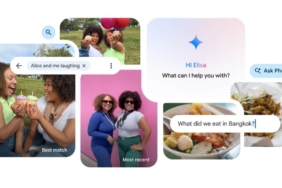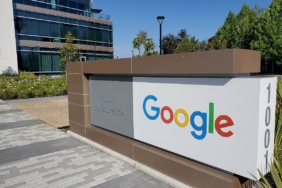Reflecting on its origins, the conception of YouTube appears almost nostalgic. According to the popular narrative, in January 2005, two employees from PayPal, Chad Hurley and Steve Chen, attended a gathering where attendees were capturing moments with digital cameras. While sharing photos was straightforward, video sharing remained a cumbersome task. Chen recounted in a 2006 Charlie Rose interview that a myriad of video formats and software obstacles hindered this process. Recognizing the impending demand for video sharing due to the proliferation of digital cameras and smartphones, the duo aimed to streamline it. Their effort culminated in a platform that rapidly grew in popularity within its first year.
Fast forward to the present, and YouTube is commemorating the 20th anniversary of its first video upload, a moment that now seems almost surreal given its extensive reach. Recent statistics reveal that 3.5 billion users engage with the platform monthly, and Google’s financial reports indicated approximately $36 billion in ad revenue in the previous year. YouTube dwarfs Netflix in viewership by 50 percent and rivals the combined viewership of platforms like Disney, Prime Video, Peacock, and Paramount Plus among users watching on television. YouTube is not just a video platform; it ranks as the second most popular search engine globally after Google and is a leading social network following Facebook. Additionally, it dominates music and podcast consumption, making it an unrivaled force in digital media.
In anticipation of this milestone, insights were gathered from various individuals associated with YouTube regarding the platform’s current landscape. A consistent inquiry was posed to them: what defines YouTube today? No longer limited to merely sharing videos, it encompasses podcasts, music, gaming, group chats, and so much more. In essence, how has YouTube evolved, and what lies ahead?
The unanimous feedback indicated that YouTube has grown increasingly complex and diverse, transforming into something far beyond a single-use platform, yet its underlying mission remains steadfast.
“The secret of YouTube was never really a secret”
Scott Silver, a product and engineering leader at YouTube, emphasized that the platform’s secret has always been apparent. Silver, having been with Google since the inception of Google Video—its earlier attempt at a video-sharing platform—explained that accumulating an extensive library of videos and effectively curating recommendations has catalyzed YouTube’s growth. This self-reinforcing cycle has contributed significantly to YouTube’s success.
This principle has underpinned YouTube’s expansion over the past two decades and fostered its immense power. However, the journey is far from complete; fresh content formats and emerging technologies continue to reshape the landscape. YouTube is eyeing ambitious growth, aspiring to not only integrate into the broader entertainment sector but potentially become the industry itself. Achieving this vision will necessitate a substantial increase in its already extensive library of content.
The many faces of YouTube
When I consulted Brian Albert, a managing director within YouTube’s advertising division, he provided a client-focused breakdown of the platform. He categorized YouTube into three primary segments: streaming content, encompassing high-end productions that compete with Netflix; social video, primarily represented by YouTube Shorts as a rival to TikTok and Reels; and traditional online video, highlighting the unique creator-driven mid- and long-form content that defines YouTube’s offerings. Albert noted that while competition exists across these categories, no single competitor addresses all three.
Albert’s categorization reflects the framework through which advertisers view video platforms. YouTube has adapted to the evolving needs of advertisers by providing them with various avenues for their investments, seeking to demonstrate the platform’s unique advantages while also accommodating traditional advertising budgets.
Tara Walpert Levy, YouTube’s vice president for the Americas, noted that advertisers have increasingly adopted a more integrated approach to spending on YouTube, not just viewing it as a digital video or TV alternative but also utilizing it for commerce and brand partnerships. This shift positions YouTube as a versatile platform for advertisers targeting diverse markets and demographics.
When examining YouTube’s varied offerings, a clear strategy emerges that revolves around monetization, appealing to advertising budgets through innovative content formats. Trends such as Shorts resemble TikToks due to audience preferences, and substantial investments in features like YouTube TV facilitate a smooth transition from traditional to digital advertising. Moreover, YouTube tailors its advertising packages around significant cultural events to maximize advertiser engagement.
The simplest way to understand YouTube is as an insatiable content collector
At its core, YouTube functions as an unquenchable content aggregator, always on the lookout for material that captures viewer engagement. Its intricate recommendation algorithm, along with robust creator incentives, ensures a continuous cycle of content creation that heightens user experience. This knowledge of the importance of enticing creators leads to more favorable compensation compared to other social platforms, solidifying the platform’s dynamic ecosystem.
Consequently, YouTube invests heavily in curating diverse content types. Originally reliant on pirated television content, the platform has evolved to embrace partnerships that safeguard creators’ rights. Following initial controversies, the platform transitioned towards hosting credible and legitimate content, appealing to a wider audience.
YouTube has explored producing award-winning content, entering collaborations with established networks, and extending its offerings to include podcasting and music. By diversifying into audio services, YouTube has further solidified its status as a comprehensive content platform, aiming to become the go-to destination for all forms of media.
The volume of content on YouTube is often a critical factor in understanding its appeal. A comparison with competitor Netflix, which offers around 6,500 titles, underscores this point. While Netflix utilizes algorithms to suggest personalized content, YouTube’s volume ensures a high probability of satisfying viewer preferences, even when the two platforms’ outputs differ significantly.
That’s content-biz, baby
Although the potential for existing content remains significant, YouTube’s success hinges on empowering creators. The platform’s homegrown talent represents its most valuable asset, yet the pressure for constant content can lead to creator burnout. Although YouTube continuously nurtures new creators, the competitive landscape poses challenges for emerging talents seeking visibility. The platform’s expansion may inadvertently hinder new creators’ opportunities.
To address these challenges, YouTube is leveraging AI technology to enhance the creator experience. Through significant investment, AI has been integrated across various functions, from automating comment responses to generating ideas and content. The potential of AI to dub videos into multiple languages could amplify YouTube’s content library exponentially. Conversely, if mishandled, this shift risks overwhelming users with subpar content and deteriorating the platform’s quality.
Additionally, YouTube is venturing into the gaming domain, having previously attempted to parallel Twitch through its YouTube Gaming app, an effort that did not resonate with audiences. Presently, gamers utilize YouTube not only for gaming content but also for gaming-related material that blends seamlessly with popular culture. YouTube acknowledges the potential of iconic gaming titles and phenomena to generate compelling content.
In its latest ventures, YouTube has introduced “Playables,” which are mini-games integrated into the platform, reminiscent of earlier social media gaming trends. From adaptations of well-known games to simple puzzles, these mini-games aim to provide unique content experiences.
“It’s consumption and creation, right?”
While Playables seem disconnected from traditional video content, YouTube argues their value lies in their entertainment potential. The concept is rooted in gaming experiences that allow users to engage with content interactively. The ambition behind these gaming mini-products is to enable users to partake in both consumption and creation, blurring the lines between gaming and content generation.
While the immediate prospects of these mini-games remain uncertain, YouTube’s broader goal is to create an ecosystem reminiscent of platforms like Roblox, where engagement fuels continuous content generation. De León acknowledges the excitement of this potential evolution.
The everywhere app
As YouTube aspires to capture the content landscape, its engineering team focuses on ensuring accessibility across a multitude of devices. John Harding, a vice president of engineering, highlighted YouTube’s long-standing commitment to making its content universally accessible, evolving from desktop browsers to a broader array of devices, including those without networks or screens.
“Now we’re trying to get YouTube on things that don’t have network connections — and don’t have screens.”
Silver noted the widespread application of YouTube, suggesting that it may rival the versatility of Google Search in terms of device compatibility. The platform’s goal is to deliver a consistent experience across diverse devices—from smart TVs and VR headsets to mobile phones and more—maximizing accessibility for users.
This endeavor imposes significant challenges, particularly as the platform must continually adapt to varying technological requirements. YouTube’s strategy centers around streamlining its core functions across devices to maintain a uniform experience. By focusing on a unified codebase, as much shared functionality as possible is preserved across platforms, ensuring efficiency in development.
For two decades, this approach has driven YouTube’s strategy: accumulate diverse content and expand accessibility. While the scale of this ambition has evolved significantly since the early days, the core mission remains unchanged. Despite the recent challenges posed by competitors like TikTok and Instagram, which boast superior algorithms, no one has replicated YouTube’s comprehensive approach. The platform’s complex ecosystem continues to thrive as it incentivizes creators and engages viewers, ultimately enhancing its position in the digital landscape.
Now that YouTube has solidified its status as a dominant force, it has also evolved from its initial image of a nimble disruptor. The platform has successfully transformed creators into stars, merging diverse content genres into a unified entertainment experience. Walpert Levy highlighted that YouTube has reached a phase where advertisers consider it a safe choice. With aspirations across podcasts, gaming, and beyond, the future is poised for further evolution of what it means to be “YouTube,” remaining engaged with users as they navigate an ever-expanding realm of content.





